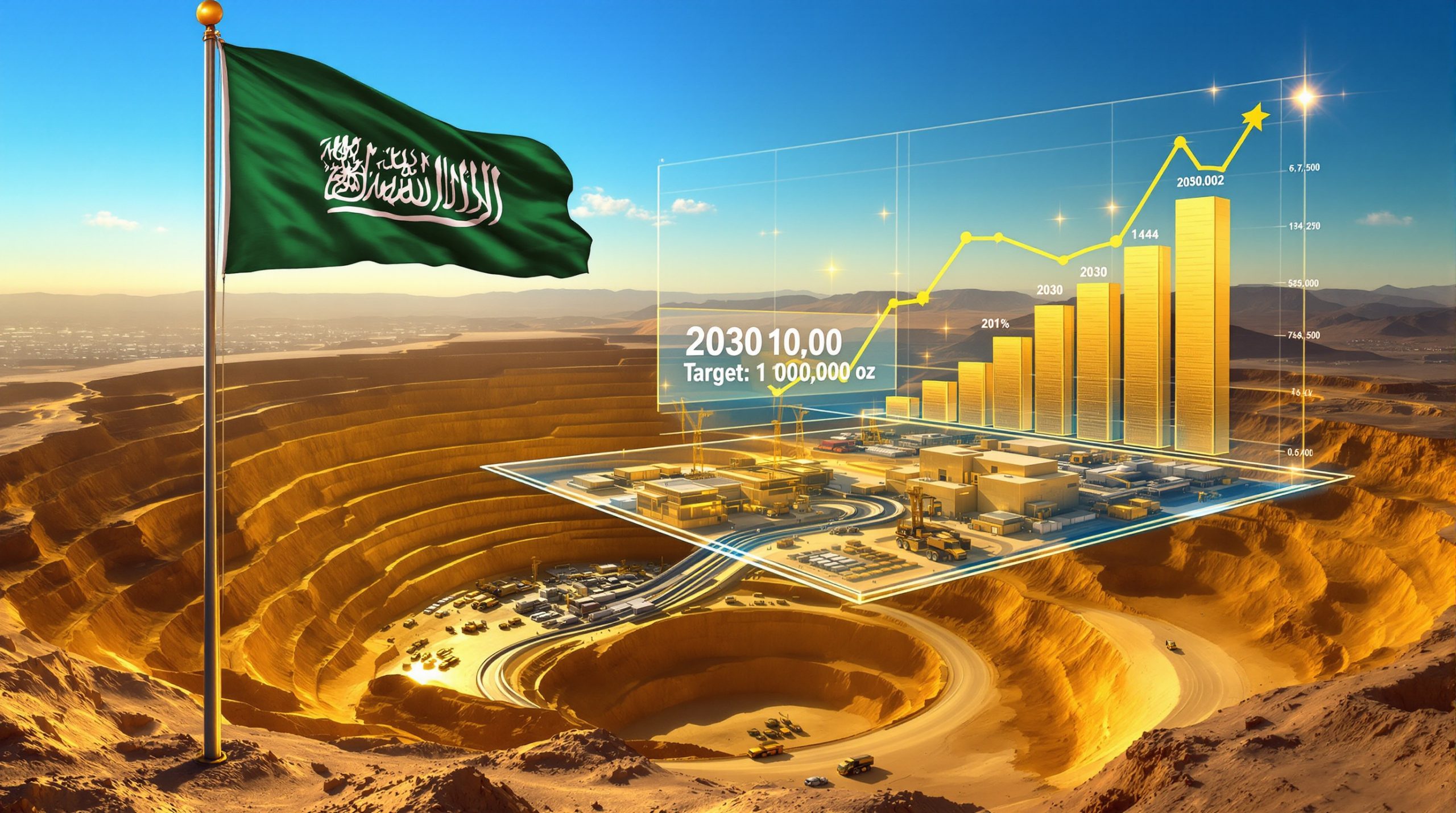Understanding Critical Minerals Agreements: The Foundation of Modern Resource Security
Critical minerals agreement frameworks represent a revolutionary approach to international resource diplomacy, establishing structured partnerships between nations to secure reliable access to materials essential for technological advancement, clean energy transitions, and national defense capabilities. These comprehensive frameworks go beyond traditional trade relationships by incorporating strategic supply chain diversification, environmental stewardship protocols, and technology sharing mechanisms that reflect the critical minerals energy security priorities of modern nations.
The significance of these agreements has intensified as global supply chains face unprecedented vulnerabilities. Traditional market-driven procurement approaches have proven inadequate for managing the complex interdependencies of modern mineral supply networks, particularly for materials where production is concentrated in geopolitically unstable regions.
Core Elements of Modern Critical Minerals Frameworks:
• Supply security through redundant sourcing pathways
• Environmental and labor standards harmonisation
• Joint research and development initiatives
• Emergency allocation protocols during supply disruptions
• Investment protection and regulatory certainty mechanisms
These agreements address fundamental market failures in critical minerals procurement, where strategic importance often outweighs pure economic considerations. The frameworks establish long-term commitments that provide stability for mining investment while ensuring partner nations maintain access to essential materials during periods of global instability.
The Geopolitical Architecture: Key Players Reshaping Global Mineral Diplomacy
United States: Orchestrating Strategic Mineral Alliances
The United States has positioned itself as the primary architect of critical minerals diplomacy, leveraging economic relationships and security partnerships to construct diversified supply networks. American strategy focuses on reducing dependency on single-source suppliers, particularly for materials essential to defense applications and clean energy infrastructure.
Recent developments demonstrate the accelerating pace of U.S. engagement in this sector. Furthermore, the landmark agreement signed between President Trump and Australian Prime Minister Albanese in October 2025 exemplifies this strategic approach, establishing comprehensive frameworks for mineral cooperation that extend beyond simple trade arrangements.
Utah's emergence as a focal point for these initiatives reflects the broader American strategy of leveraging domestic mineral resources while building international partnerships. The state's proven track record in accelerating permitting processes, reducing approval times from 200 days to 45 days on state lands and achieving federal land approvals in as little as 28 days, demonstrates the regulatory reforms necessary to support critical minerals development.
Moreover, Trump's critical minerals order has fundamentally reshaped the regulatory landscape, creating new opportunities for accelerated development and international partnerships that prioritise strategic supply security.
Australia: Leveraging Geological Advantages for Strategic Partnerships
Australia's geological endowments position it as an indispensable partner in global critical minerals supply chains. The continent hosts significant reserves of lithium, rare earth elements, cobalt, and other battery metals essential for the global energy transition. This natural advantage, combined with stable governance structures and established mining expertise, makes Australia a preferred partner for long-term supply agreements.
Australian strategy emphasises responsible mining practices and environmental stewardship as competitive advantages in securing international partnerships. In addition, the nation's Australia lithium strategy integrates sustainability metrics into commercial agreements, addressing growing concerns about the environmental impact of mineral extraction while maintaining supply reliability.
European Union: Balancing Sustainability with Supply Security
The European Union's critical minerals agreement strategy reflects the bloc's commitment to achieving carbon neutrality while maintaining industrial competitiveness. EU frameworks prioritise materials essential for renewable energy technologies, electric vehicle production, and digital infrastructure development.
European agreements incorporate comprehensive environmental and social governance requirements that exceed traditional mining standards. These enhanced protocols address concerns about mining impacts while establishing frameworks for responsible sourcing that can serve as models for global industry standards.
Supply Chain Vulnerability Mitigation: Strategic Approaches to Risk Management
Geographic Distribution and Source Diversification
Modern critical minerals agreements prioritise spreading supply sources across multiple geographic regions and political systems. This diversification strategy reduces exposure to regional instabilities, natural disasters, and policy changes that could disrupt supply chains.
Supply Chain Risk Analysis Framework:
| Vulnerability Category | Traditional Mitigation | Agreement-Based Solutions |
|---|---|---|
| Single-source concentration | Market diversification | Mandatory multi-source requirements |
| Price volatility exposure | Financial hedging instruments | Long-term contract frameworks |
| Quality specification risks | Post-delivery testing protocols | Standardised specification agreements |
| Environmental compliance gaps | Basic regulatory adherence | Enhanced sustainability requirements |
| Geopolitical disruption risks | Insurance mechanisms | Emergency allocation protocols |
Technology Transfer and Capacity Development
Critical minerals agreements increasingly incorporate provisions for sharing processing technologies, environmental remediation techniques, and workforce development programmes. These technology transfer elements strengthen partner nations' capabilities while creating more resilient and distributed supply networks.
Advanced processing capabilities represent a critical component of supply chain security. Many critical minerals require sophisticated refinement processes that are currently concentrated in a limited number of facilities globally. However, agreement frameworks address this vulnerability by encouraging the development of processing capacity in partner nations through technology sharing and joint investment programmes.
Environmental Integration: Sustainability as a Strategic Imperative
Enhanced Mining Standards and Monitoring Systems
Contemporary critical minerals agreement frameworks embed environmental protection requirements directly into supply chain structures, going beyond traditional regulatory compliance to establish comprehensive sustainability protocols. These enhanced standards address water management, biodiversity protection, carbon emission reduction, and community impact mitigation.
Advanced monitoring technologies enable real-time tracking of environmental performance across supply chains. Satellite monitoring, IoT sensor networks, and blockchain-based tracking systems provide unprecedented visibility into mining operations, allowing for rapid identification and correction of environmental compliance issues.
The integration of mine reclamation evolution principles ensures that contemporary agreements address the full lifecycle of mining operations, from initial extraction through final site restoration and long-term environmental monitoring.
Circular Economy Integration and Resource Efficiency
Future-oriented agreements increasingly emphasise recycling, reuse, and circular economy principles to reduce primary extraction requirements while maintaining supply security. These provisions recognise that sustainable mineral supply chains must incorporate end-of-life material recovery and processing capabilities.
Circular Economy Metrics in Critical Minerals Agreement Frameworks:
• Recycling content requirements for finished products
• End-of-life material recovery targets
• Secondary processing facility development commitments
• Waste stream valorisation protocols
• Material substitution research and development initiatives
Investment Flow Dynamics: Capital Allocation in Agreement-Based Markets
Regulatory Certainty and Investment Attraction
Critical minerals agreements influence global investment patterns by providing regulatory certainty and market access guarantees that reduce investment risk. Mining companies increasingly prioritise projects in countries with established agreement frameworks, leading to concentrated capital deployment in partner nations.
The financial implications of participation in agreement-based supply chains extend beyond simple market access. Consequently, enhanced environmental and social requirements typically increase upfront capital requirements but provide long-term revenue stability through contracted supply arrangements.
Infrastructure Development and Economic Multiplier Effects
Partnership agreements often include commitments for transportation, processing, and port infrastructure development. These investments create economic multiplier effects that extend beyond mining operations to benefit broader regional development and industrial capacity building.
Utah's experience demonstrates these multiplier effects in practice. The state's leadership in GDP growth over the past decade, maintaining the number one position nationally, reflects the economic benefits of positioning regions as critical minerals hubs within international agreement frameworks.
Strategic Mineral Categories: Prioritization and Market Dynamics
Battery Technology Materials: The Energy Transition Foundation
Lithium, cobalt, nickel, and graphite receive primary attention in current agreement frameworks due to their essential roles in electric vehicle batteries and grid-scale energy storage systems. These materials represent the foundation of the global energy transition, with demand projections indicating substantial growth over the coming decades.
Agreement frameworks establish production targets, quality specifications, and supply allocation mechanisms for these high-demand materials. For instance, the strategic importance of battery metals has led to the development of specialised trading arrangements that prioritise supply security over pure market optimisation.
Rare Earth Elements: Critical for Advanced Technologies
Despite their misleading name, rare earth elements are essential for electronics manufacturing, renewable energy systems, and defense applications. Agreement frameworks address the complex processing requirements and environmental challenges associated with rare earth production while ensuring reliable supply for advanced technology applications.
The concentration of rare earth processing capabilities in limited geographic regions represents a significant supply chain vulnerability that agreements seek to address through technology transfer and processing facility development programmes.
Emerging Technology Minerals: Preparing for Future Needs
As technology continues to evolve, critical minerals agreements increasingly include provisions for materials like gallium, germanium, and indium, which are essential for semiconductor manufacturing and advanced electronics. These forward-looking provisions recognise that technological advancement creates new mineral dependencies that require proactive supply chain development.
Trade Mechanism Innovation: Beyond Traditional Commerce
Preferential Trading Frameworks and Market Access
Critical minerals agreements establish preferential trading arrangements that include reduced tariffs, streamlined customs procedures, and priority access terms for partner nations. These mechanisms make bilateral trade more attractive than open market alternatives while providing supply security benefits.
Preferential Trading Mechanism Analysis:
| Mechanism Type | Traditional Trade | Agreement-Based Trade |
|---|---|---|
| Tariff structures | Standard WTO rates | Preferential or zero tariffs |
| Customs processing | Standard procedures | Expedited clearance protocols |
| Quality assurance | Importer verification | Mutual recognition standards |
| Supply allocation | Market-based distribution | Priority access agreements |
| Emergency protocols | Individual company response | Coordinated government action |
Emergency Response and Crisis Management
Partnership agreements include sophisticated contingency plans for supply disruptions, incorporating strategic reserve sharing, priority allocation systems, and coordinated response mechanisms during crises. These protocols ensure that critical industries maintain access to essential materials even during global disruptions.
Implementation Challenges: Navigating Complex Realities
Coordination Complexity and Standards Harmonisation
Translating high-level policy agreements into operational supply chains requires extensive coordination between government agencies, private companies, and international organisations. Regulatory harmonisation, quality standards alignment, and enforcement mechanism development present ongoing implementation challenges.
The complexity increases exponentially when multiple partner nations with different legal systems, environmental regulations, and business practices attempt to create unified supply chain frameworks. Success requires unprecedented levels of international cooperation and regulatory flexibility.
Market Distortion and Competitive Balance
Preferential trading arrangements may create artificial market conditions that disadvantage non-partner nations or distort global pricing mechanisms. Balancing strategic supply security objectives with market efficiency principles remains an ongoing challenge for agreement architects.
These distortions can lead to resource allocation inefficiencies and may prompt non-partner nations to develop competing agreement frameworks, potentially fragmenting global mineral markets into competing blocs.
Technological Evolution: Next-Generation Agreement Frameworks
Digital Integration and Automation
Next-generation critical minerals agreements incorporate artificial intelligence, blockchain tracking systems, and automated compliance monitoring to improve efficiency and transparency. These technological enhancements enable real-time supply chain optimisation, predictive risk management, and automated contract execution.
Advanced data analytics provide unprecedented visibility into supply chain performance, enabling rapid identification of potential disruptions and automatic activation of contingency protocols. Machine learning algorithms optimise routing, processing, and distribution decisions to maximise supply chain resilience.
The broader mining industry evolution demonstrates how technological advancement continues to reshape operational capabilities and strategic possibilities within agreement frameworks.
Smart Contract Implementation and Automated Governance
Blockchain-based smart contracts automate many aspects of agreement implementation, including payment processing, quality verification, and compliance monitoring. These systems reduce administrative overhead while providing transparent, immutable records of all supply chain transactions.
Investment Strategy Implications: Navigating the New Landscape
Market Access Premium and Competitive Positioning
Companies operating within critical minerals agreement frameworks gain preferential access to partner nation markets, potentially providing significant competitive advantages and revenue stability. This market access premium must be weighed against the additional compliance costs and operational requirements associated with agreement participation.
Investment Decision Framework for Critical Minerals Projects:
• Market Access: Guaranteed partner nation access versus open market competition
• Regulatory Environment: Framework protection versus variable policy risk exposure
• Environmental Requirements: Enhanced standards versus minimum compliance costs
• Capital Intensity: Potentially higher upfront investment versus standard market requirements
• Revenue Predictability: Long-term contract stability versus market price volatility
Long-Term Strategic Planning Requirements
Critical minerals agreements represent multi-decade commitments that require long-term strategic planning and investment approaches aligned with partner nation objectives. Companies must develop capabilities to navigate complex international regulatory environments while maintaining operational flexibility.
The 11,000+ registered attendees at IMARC 2025, including global mining company leaders, government representatives, and investors, demonstrates the intense industry focus on understanding and participating in these evolving frameworks.
Future Trajectory: The Evolution of Global Mineral Security
Critical minerals agreements represent a fundamental paradigm shift toward strategic resource diplomacy that balances economic efficiency with national security imperatives and environmental sustainability. As clean energy transitions accelerate and technological dependencies deepen, these partnership frameworks will likely expand in both scope and sophistication.
The integration of circular economy principles, advanced monitoring technologies, and automated governance systems will continue to enhance the effectiveness of these agreements while addressing environmental and social concerns. Furthermore, success in implementing current frameworks will determine whether this model becomes the dominant paradigm for international minerals trade.
For investors, mining companies, and technology manufacturers, understanding and adapting to this new landscape will be essential for long-term success. The companies that can effectively navigate the complex requirements of agreement-based supply chains while maintaining operational efficiency will be best positioned to capitalise on the opportunities created by global mineral security imperatives.
Disclaimer: This analysis is based on publicly available information and current market conditions. Critical minerals markets are subject to rapid change due to technological developments, policy changes, and geopolitical factors. Readers should conduct independent research and consult with qualified professionals before making investment decisions.
Want to Capitalise on the Critical Minerals Investment Boom?
Discovery Alert's proprietary Discovery IQ model delivers real-time notifications on significant ASX mineral discoveries, instantly transforming complex exploration announcements into actionable investment insights ahead of the broader market. With critical minerals agreements reshaping global supply chains and creating unprecedented opportunities for Australian mining companies, explore Discovery Alert's historic discovery examples to understand why major mineral breakthroughs can generate substantial returns, then begin your 30-day free trial today to position yourself at the forefront of the next mining discovery.




